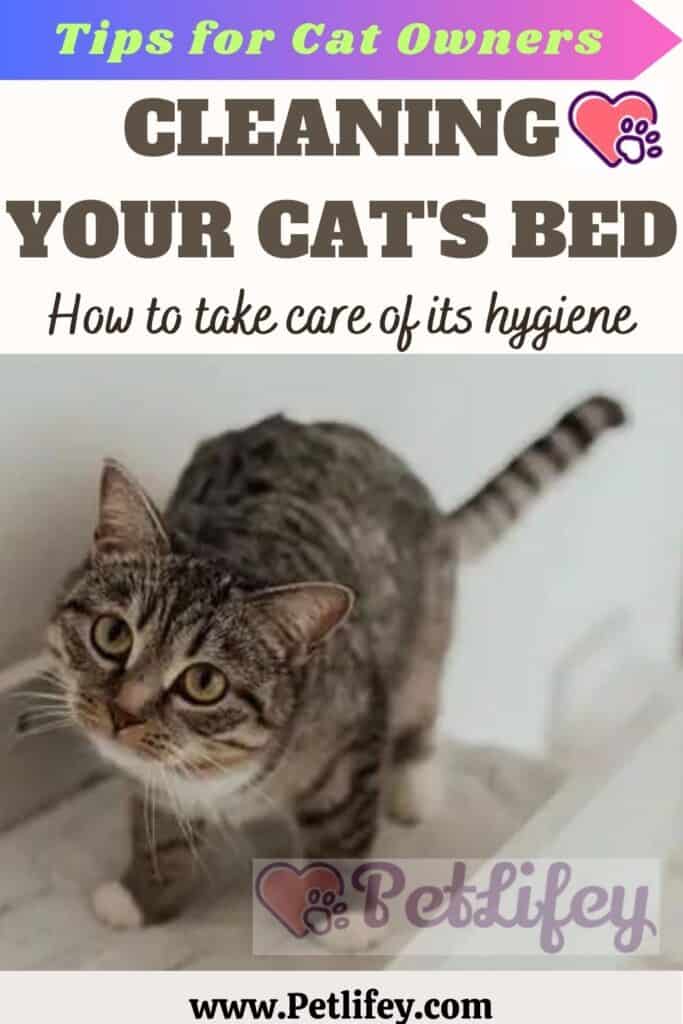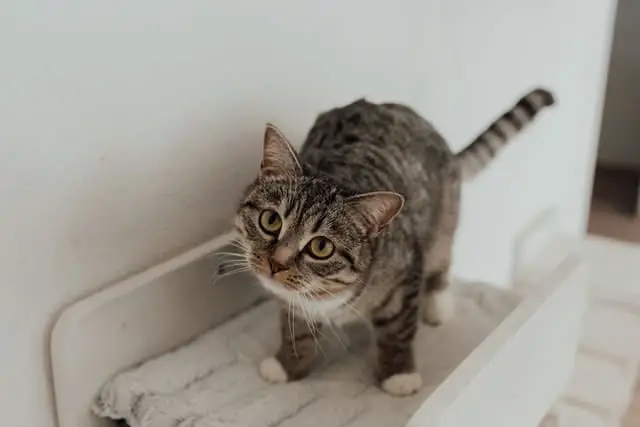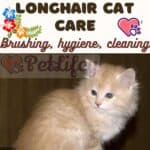
Not everyone knows how to clean a cat’s kennel, but this is a fundamental point on which the health and well-being of our cat depends.
Washing your cat ‘s bed is a necessary part of feline hygiene care, especially if you have a cat that defecates all the time (it can happen), a hairless breed with very oily skin or a cat with health problems. Knowing how to properly clean their cubicles is important to their health as many products on the market are toxic to pets.
When preparing to clean your cat bed and all accessories, and this is your first time, start by checking the manufacturer’s label, which generally indicates care instructions. Some items may be washable in one way, while others require cleaning in another. Note that if you have blankets or sheets that your cat likes to lie down on, you can follow the same steps below.
Cleaning the cat bed: the 3 important steps to follow
The bunk is the place where the cat not only rests, but spends most of its hours: for this reason the bed collects dust and any type of animal residue, even and above all the hair.
For our cat to live in the best hygienic conditions, it is necessary to pay particular attention to its location, to clean it and to let it air every day, as we do with our own beds.
Let’s see now what are the most important steps to follow.
1. Remove cat hair
One of the best ways to avoid excessive accumulation of cat hair on your bed is daily brushing and grooming. It doesn’t matter how often you clip him: however, expect at least some amount of hair to stick to his bed.
This step can be followed in several ways
First way
Before throwing a bunk in the washing machine or washing it by hand, remove as much hair as possible before the fabric gets wet. Hairs can clog the drain pipes in the washer and the dryer vents – so reducing the amount in the machines helps keep them running.
Second way
Give your bed and bedding a good shake, preferably outside, perhaps out on your balcony, where you won’t mind hair falling to the ground. You can also hang it up and gently tap it with a broomstick or large spoon to loosen the hairs’ grip on the fabric.
Third way
You can use a liquid lint cleaner, scotch or packing tape, a pet grooming glove, or a roller made specifically for removing pet hair.
Fourth way
A more expensive option is a handheld vacuum cleaner with an attachment designed for pet hair that can make life a lot easier if you have multiple shedding pets. You can also use a full-sized vacuum cleaner with a brush or crevice tool.
Fifth way
You can also put the entire bed kit in the dryer for about ten to fifteen minutes, on a cold or no heat setting. Use dryer balls or pet drying sheet to remove hair and make sure your dryer lint catcher is clean before starting. Stop the cycle midway and clean the lint trap again and be sure to clean it when finished.
Sixth way
Once you have removed as much hair as possible, you can put hair products in the laundry to help you detach hair during the wash cycle. These products can also be used in the dryer and some, such as balls, are reusable: they help detach the hair from the fabric and also prevent the dryer from clogging.
2. Washing the bunk
There are a few steps you can take to keep your cat bed in the best possible condition after putting them in the washer and dryer. You should first make sure that both the cover and the mattress are machine washable, as covers normally are, but mattresses are not always.
First step
You should also remove dirt, debris, food waste, or vomit from the sheets before putting them in the washing machine to increase the chances of it coming out clean and not blocking the pipes.
Second step
If your cat’s bed has a cover, remove it and put it in the washing machine with the mattress inside. Do not wash anything for your pets along with your clothes or human underwear.
Third step
If you are washing a “tent” type cat bed, pull the bed in as most of the hair will be inside the bed.
Fourth step
If the bed is very dirty, filled with vomit, feces or urine, you may need to use the pre-soak cycle and use a stain remover before the final wash. Make sure the stain remover is safe for pets and most importantly odorless.
Make sure you use a cold water wash for the main cycle.
Fifth step
When you’re ready to wash, use a pet-friendly cleaner.
You can also add fabric softener if it’s safe for pets. Fabric softeners can help remove pet hair, as the softened fabric will cause the hair to be “pulled out” by the water more easily.
Sixth step
If you can’t find a specific pet cleaner, use the mildest soap you can find free of dyes, perfumes, or additives such as a liquid laundry detergent for sensitive skin.
Seventh step
If you need to use a cleaner that is safe but not specifically for pets, you can add it to your wash with a soap that works with your regular detergent to remove stains and odors such as urine, vomit, blood and faeces.
Eighth step
If you still see stains after the first wash, pre-treat the stains again and wash them one or more times until they are clean.
Ninth step
Place the bedding in the dryer with balls to dry the hair. You can also use dryer sheets if they are safe for pets.
Tenth step
Use a low heat setting on the dryer. Make sure you clean the lint trap on the dryer, before starting a cycle and after each cycle.
Eleventh step
You also have the option of hanging bed linen on a clothesline, outside, perhaps on your balcony: this drying method will take longer but will minimize wear on the fabric.
3. Clean the cat bed without the washing machine
This is because not all bunks are machine washable, and a poor human being will have to be ingenious as well.
First tip
If your mattress and cover aren’t machine washable (or you’re not sure), you can wash them in the sink, bathtub, or large bucket with cold water and detergent. Soak and wash them with your hands and rinse thoroughly when done.
Second advice
Make sure you use a sink or tub to place a hair collector on the drain and clean thoroughly when done to prevent the plumbing from becoming clogged with your pet’s hair.
Third advice
If the bunk is very dirty, you can rinse it by emptying the wash water and refilling it with clean, cold water. Wring out the extra water from the bedding.
Fourth tip
If your cat’s bedding is not damaged in the dryer, you can place it in the appliance at a low temperature.
Otherwise, depending on the size, you can hang it on a clothesline, drying rack, shower or any place where it can rest for some time to dry.
If you need to place it on a table or on the floor, place a towel or plastic sheet underneath.
Cleaning the cat’s kennel: pay attention to the products you use

Sometimes, pet adopters use detergents that have a pleasant scent to clean their puppies’ cubicles, in order to cover up bad odors released by excrement. It sounds good and right, but Weber warns that a cat has a much more sensitive sense of smell than we do and that scented soaps can keep them away from their bunk, or even make them sick.
- This is especially true of any scents cats normally avoid such as citrus, lavender, eucalyptus, and mint.
- Do not use essential oil products in the wash as they can be toxic to cats as well.
- Also avoid using products that contain ammonia.
- You can be safer by using a product that was made specifically for pets or that is free from dyes and fragrances.






